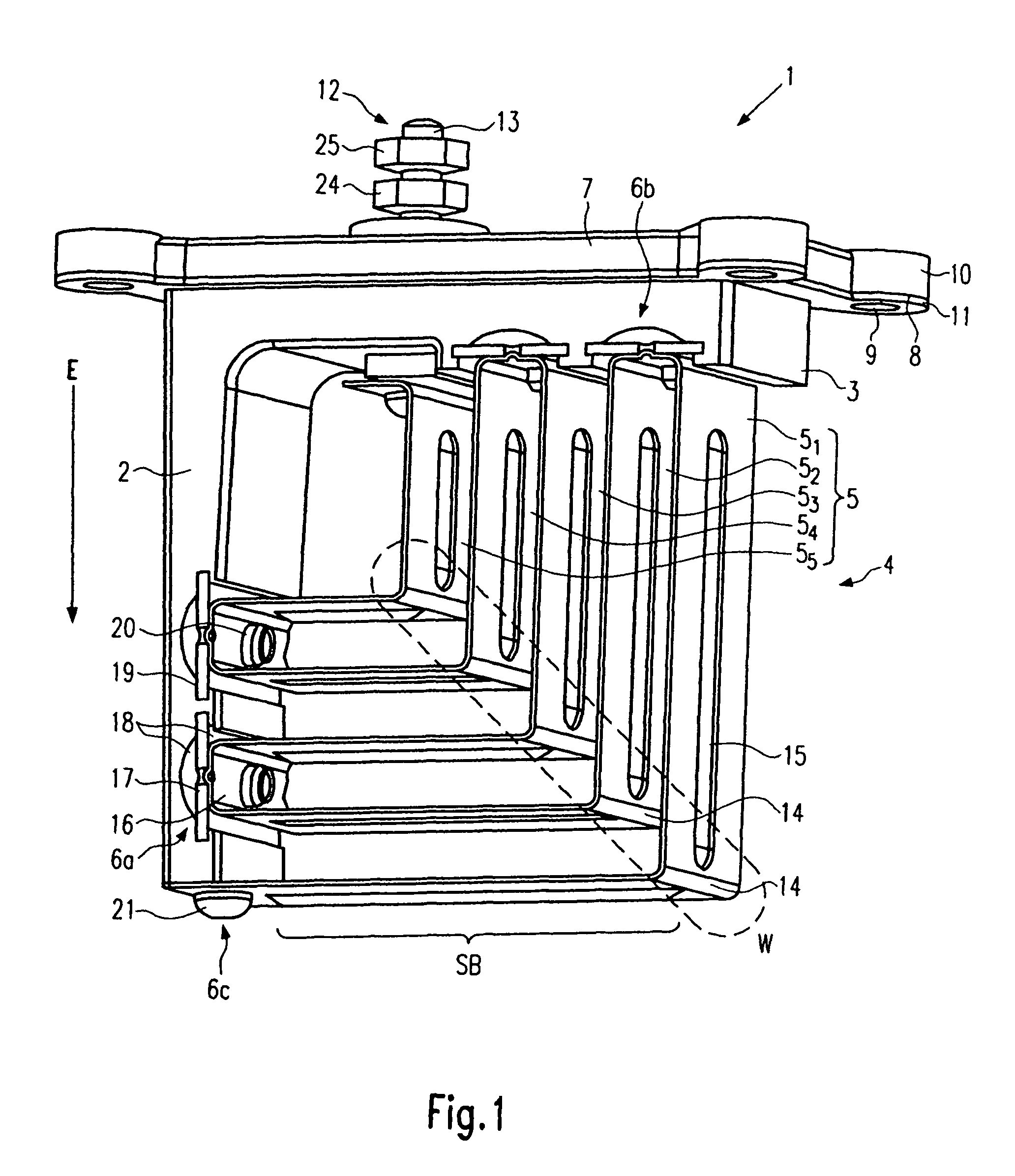Heating flange with geometrically stable structure
a technology of geometric stability and heating flange, which is applied in the direction of space heating and ventilation details, fuel heating, air heaters, etc., can solve the problems of manufacturing, mounting and maintenance, and achieve the effect of small installation size, good access to mounting points, and large flow cross-section
- Summary
- Abstract
- Description
- Claims
- Application Information
AI Technical Summary
Benefits of technology
Problems solved by technology
Method used
Image
Examples
second embodiment
[0091]FIG. 3 shows a schematic perspective depiction of the heating flange according to the invention, and indicates the intake line A. For the sake of clarity, only the differences with respect to the above-described embodiment are explained in the following. For parts whose configuration and / or function is similar or identical to parts in the previous embodiment, the same reference numbers are used as in FIG. 1.
[0092]The intake line A is depicted in sectioning in the area of the heating flange 1. It can be seen that the mounting leg piece 3 lies outside the intake line A, whereas the heat conductor 5 is arranged within the intake line A. In this way, the mounting leg piece 3 covers the mounting opening M in the intake line A. No further explanation is given here for the mounting and sealing of the heating flange 1 according to the invention in the mounting opening M of the intake line A.
[0093]The heat conductor 5 of FIG. 3 is arranged with a curved shape and extends from a first m...
third embodiment
[0097]FIG. 4 shows a schematic side-view of the heating flange according to the invention. For the sake of clarity, only the differences with respect to the above-described embodiments are explained in the following. For parts whose configuration and / or function is similar or identical to parts in the previous embodiment, the same reference numbers are used as in the preceding figures.
[0098]The frame of the heating flange is again provided with two leg pieces 2 and 3, which are directly connected to each other at the ends and that form an open, this time obtuse, angle in the cross-section of flow.
[0099]The heat conductor 5 is formed as a meandering strip heater, which is run back and forth between mounting points 6a and 6b of the retaining leg pieces 2 and 3. In contrast to the heat conductor 5 of FIG. 1 and FIG. 2, the heat conductor 5 in FIG. 4 has two kinks 14a and 14b in a section between the one mounting point 6a on the insertion leg piece 2 and the other mounting point 6b on t...
fourth embodiment
[0104]FIG. 5 shows the schematic side-view of a Again, only the differences with respect to the above-described embodiments are explained. For parts whose configuration and / or function is similar or identical to parts in the previous embodiments, the same reference numbers are used as in the preceding figures.
[0105]This time, the frame of the heating flange is designed with an essentially T-shaped cross-section. At the same time, the longitudinal axes of the two leg pieces 2 and 3 are arranged roughly perpendicular to one another and the one end of the insertion leg piece 2 is directly connected to roughly the centre of the mounting leg piece 3. Consequently, the two leg pieces 2 and 3 span a heating flange with two cross-sections of flow that lie next to one another.
[0106]In each of the two cross-sections of flow, a separate heat conductor 5 and 5′ extends as a meandered strip heater back and forth between mounting points 6 on the leg pieces 2 and 3. The two heat conductors 5 und ...
PUM
 Login to View More
Login to View More Abstract
Description
Claims
Application Information
 Login to View More
Login to View More - R&D
- Intellectual Property
- Life Sciences
- Materials
- Tech Scout
- Unparalleled Data Quality
- Higher Quality Content
- 60% Fewer Hallucinations
Browse by: Latest US Patents, China's latest patents, Technical Efficacy Thesaurus, Application Domain, Technology Topic, Popular Technical Reports.
© 2025 PatSnap. All rights reserved.Legal|Privacy policy|Modern Slavery Act Transparency Statement|Sitemap|About US| Contact US: help@patsnap.com



